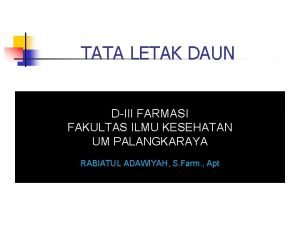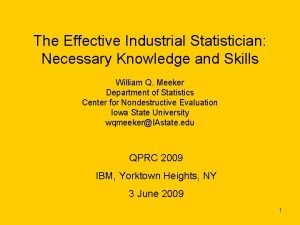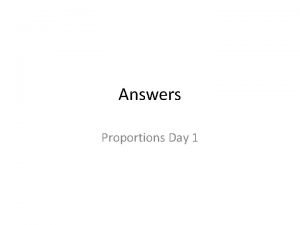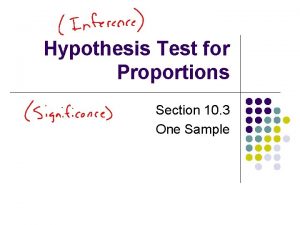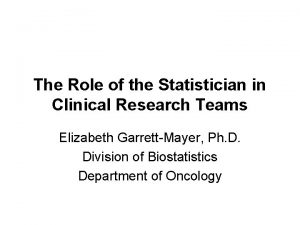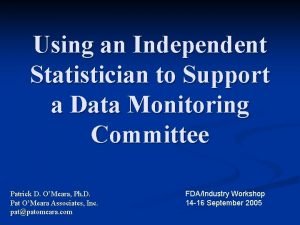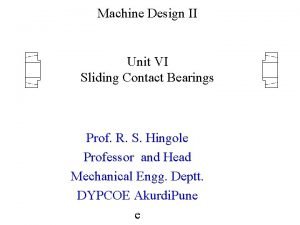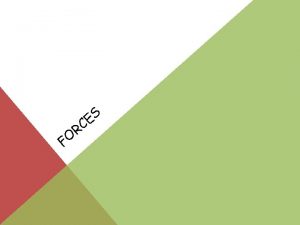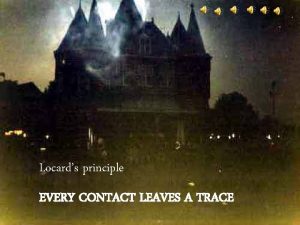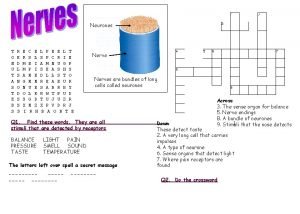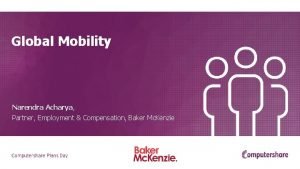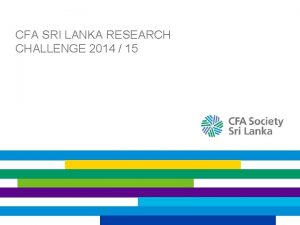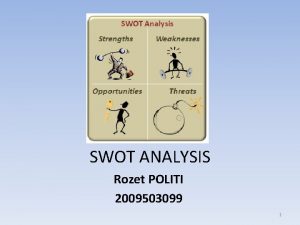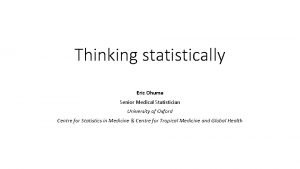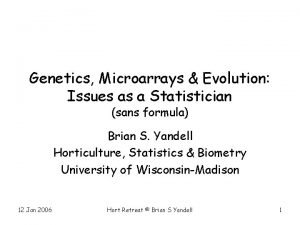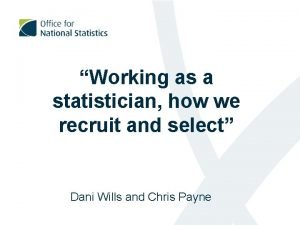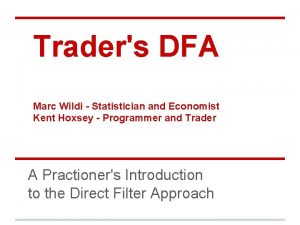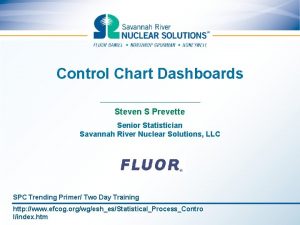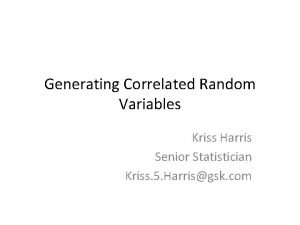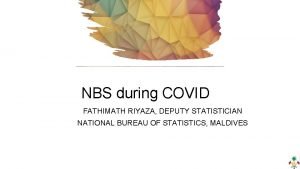Contact Eric Rozet Statistician Eric Rozetarlenda com 32
























- Slides: 24

Contact: Eric Rozet, Statistician Eric. Rozet@arlenda. com +32 (0) 473 690 914 www. arlenda. com

Transfer of analytical methods: the Bayesian way E. Rozet, P. Lebrun, B. Boulanger Eric. Rozet@arlenda. com www. arlenda. com June 12 th 2014, Bayes 2014, London

Analytical Methods No direct quantification ! Concentration (X) = ? signal = y signal Needs calibration…: concentration … to obtain concentration (X): y signal x 3 concentration

Sending lab Analytical Method Life Cycle Development Selection Receiving lab Life Cycle Routine use Use Guarantees ? Validation Method Transfer Reliability ? 4

Analytical Method Life Cycle n What is the final aim of quantitative analytical methods ? - Start with the end ! - Objective: provide results used to make decisions Release of a batch Stability/Shelf life Patient health PK/PD studies, … n What matters are the results produced by the method. n Fit for purpose means: make correct decisions 5

Analytical Method Life Cycle n Need to demonstrate/guarantee that the analytical method will provide, in its future routine use, quality results in order to make correct decisions n This is the key aim of Analytical Method Transfer ! How ? 6

Analytical Method Transfer strategies n <USP 1024>: Transfer of analytical procedures 1. Co-validation 2. (Re)-validation 3. Transfer Waiver 4. Comparative testing n Comparative testing: - Samples taken from the same produced batch are analyzed at the two laboratories - Usually not a paired analysis due to the destructive nature of assays - Assumes sending lab is the reference 7

Comparative testing: decision methodologies n 4 methodologies have been proposed: 1. Descriptive: point estimates only 2. Difference: using bilateral Student t-test 3. Equivalence: using confidence intervals of the parameters 4. Total Error: using statistical tolerance intervals (β-expectation tolerance intervals) n None are fully « fit for purpose » demonstrations: èEnsure at the end of AMT to make correct decisions (e. g. batch release)

Comparative testing: new proposition The aim of AMT is to ensure that the receiving lab and sending lab will make the same decisions using the analytical results with « high » probability.

Comparative testing: new proposition n Proba to be compliant in the 2 labs Proba to be non compliant in the 2 labs Proba to make the same decision in the 2 labs

Comparative testing: common design Batch A Sending Lab Receiving Lab … Run 1 Run 2 Rep 1 Rep 1 Rep 2 Rep 2 … … Rep 3 …

Comparative testing: common model n

Case 1: Content HPLC assay n Transfer between two QC labs of an HPLC assay to quantify an active substance in a drug product - Data taken from: Dewé et al. , Using total error as decision criterion in analytical method transfer, Chemom. Intel. Lab. Syst. 85 (2007) 262– 268. - Design: • 1 batch • Sender: 1 run 6 replicates • Receiver: 3 runs, 6 replicates per run • Specification limits (λ): ± 5% around the target content

Case 1: Content HPLC assay Sending laboratory Receiving laboratory

Case 1: Content HPLC assay

Case 2: Bioassay n Transfer between two QC labs of parallel line assay - Data taken from: 2012 PDA (Parenteral Drug Association) Technical report N° 57 Analytical Method Validation and Transfer for Biotechnology products. - Design: • 1 batch • Sender: 4 runs, 2 replicates per run • Receiver: 4 runs, 2 replicates per run • Specification limits (λ): ± 10% around the target content

Case 2: Bioassay Sending laboratory Receiving laboratory

Case 2: Bioassay n

Case 3: Impurity HPLC assay n Transfer between to QC labs of an HPLC assay to quantify an impurity in a drug product - Data taken from: Rozet et al, The transfer of a LC-UV method for the determination of fenofibrate and fenofibric acid in Lidoses: Use of total error as decision criterion, J. Pharm. Biomed. Anal. 42 (2006) 64– 70. - Design: • 1 batch • Sender: 1 run 3 replicates • Receiver: 5 runs, 3 replicates per run • Specification limits (λ): <0. 180 mg of impurity

Case 3: Impurity HPLC assay Sending laboratory Receiving laboratory

Case 3: Impurity HPLC assay

Case 3: Impurity HPLC assay Using informative prior for sending lab

Conclusions • The proposed methodology allows to make a real fit for purpose decision about the acceptability of the Analytical Method Transfer • Probability of success allows to make a risk based decision • Applicable to any type of assays not only quantitative ones • Easy extension to more complex designs (several batches, …) • Allows to incorporate prior information 23

Contact: Eric Rozet, Statistician Eric. Rozet@arlenda. com +32 (0) 473 690 914 www. arlenda. com
 Contoh duduk daun tersebar
Contoh duduk daun tersebar Bài thơ mẹ đi làm từ sáng sớm
Bài thơ mẹ đi làm từ sáng sớm Cơm
Cơm What does a statistician do
What does a statistician do Statistician
Statistician A statistician read that at least 77
A statistician read that at least 77 A statistician read that at least 77
A statistician read that at least 77 Role of statistician in clinical trials
Role of statistician in clinical trials Independent statistician
Independent statistician Advantages and disadvantages of sliding contact bearing
Advantages and disadvantages of sliding contact bearing Dangling bond
Dangling bond Whats a noncontact force
Whats a noncontact force Is air resistance a non contact force
Is air resistance a non contact force Post encounter stage in service marketing
Post encounter stage in service marketing Contact vs field forces
Contact vs field forces Force and motion
Force and motion Examples of non contact force
Examples of non contact force Irritant vs contact dermatitis
Irritant vs contact dermatitis Air resistance contact force
Air resistance contact force Every contact leaves a trace
Every contact leaves a trace Nac burial fund 2021 banking details
Nac burial fund 2021 banking details Rseau contact
Rseau contact Narendra acharya contact info
Narendra acharya contact info Cfa contact
Cfa contact Nac burial fund forms
Nac burial fund forms
